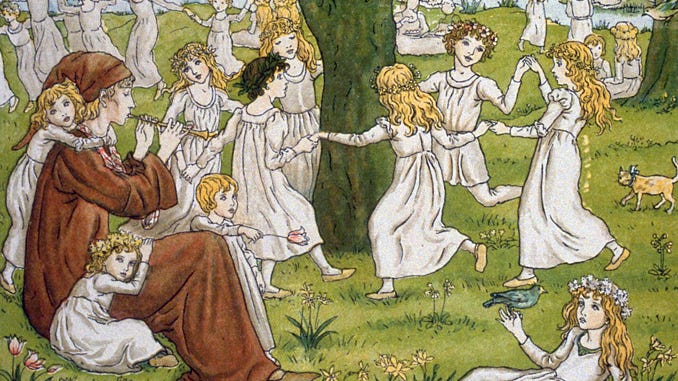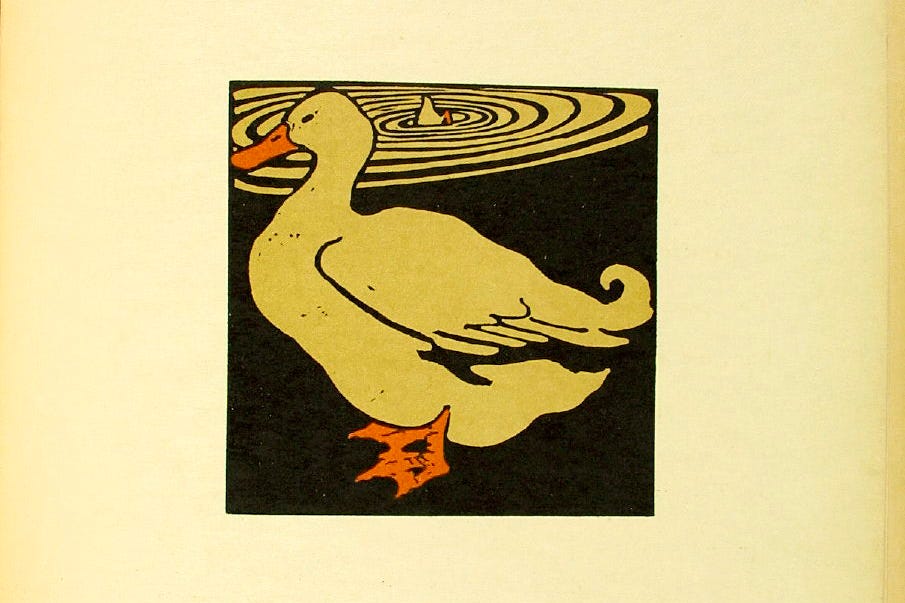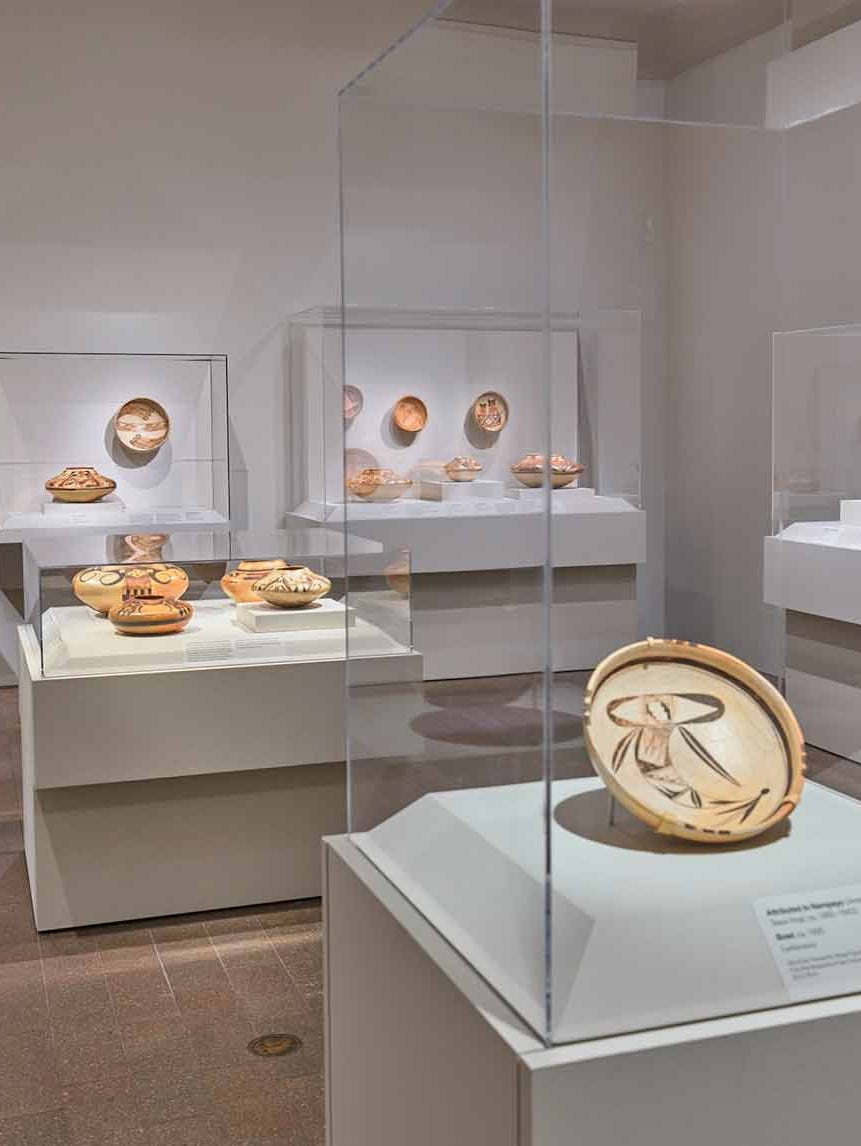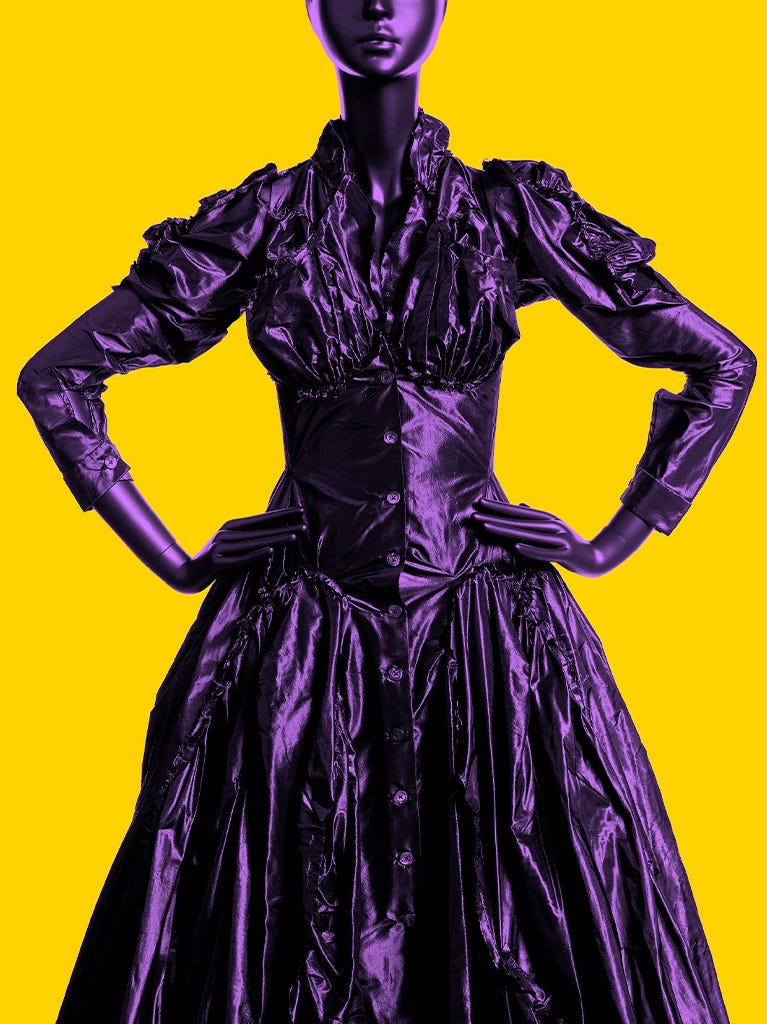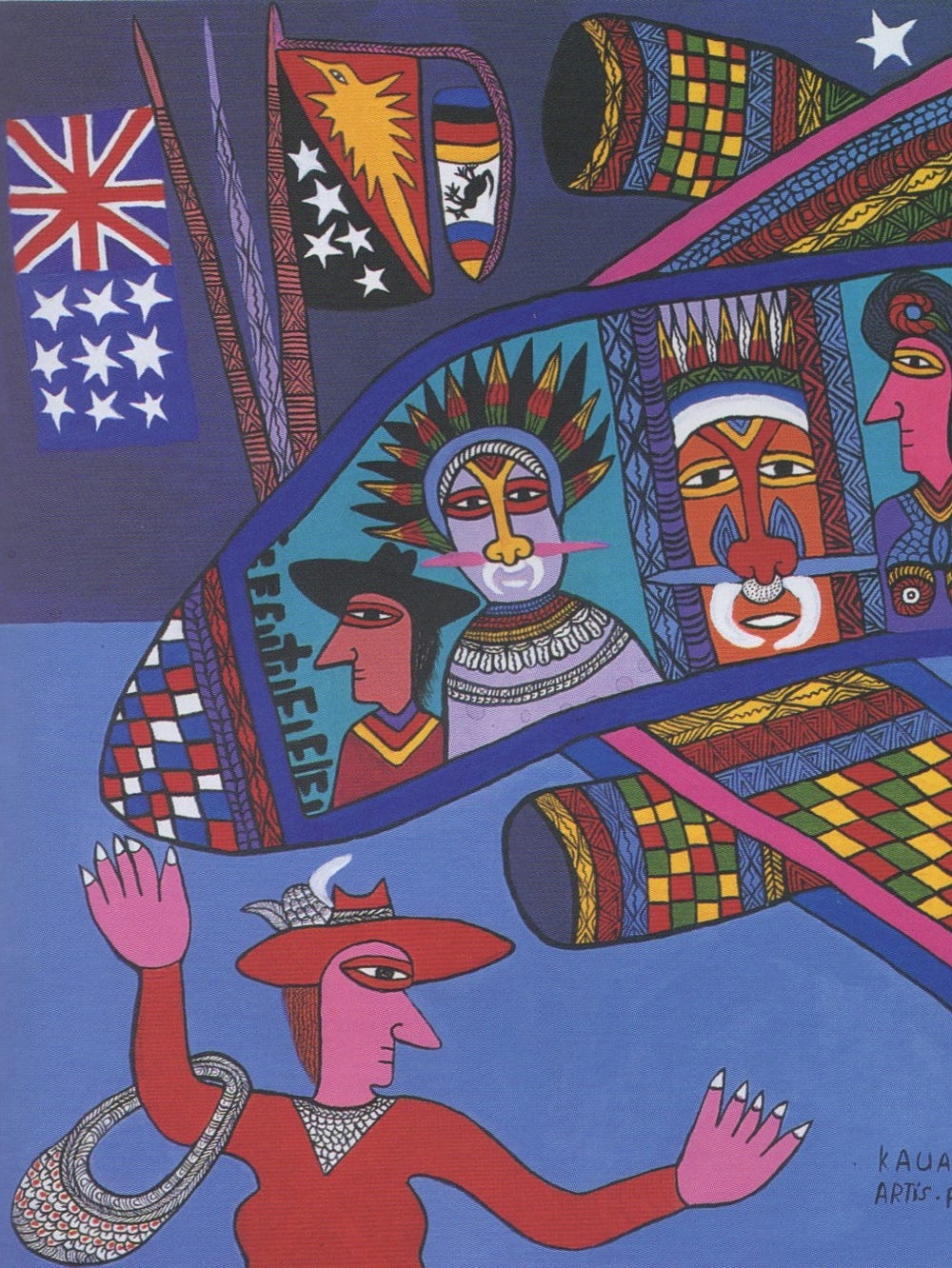Kate Greenaway (British, 1846–1901). Edmund Evans (printer), British, 1826–1905. Frontispiece (May Day Dance) in The Pied Piper of Hamelin by Robert Browning (London and New York: Frederick Warne) (detail), 1888. Color wood engraving. Achenbach Foundation for Graphic Arts. 1963.30.398732.1
Making the Modern Picture Book: Children’s Books from the Victorian Era
The end of the 19th century was a formative period for the design, production, and marketing of children’s books in England. Due in large part to revolutionary advancements in book printing techniques, particularly those made by printer Edmund Evans, color printing became commercially viable. Evans commissioned, designed, and produced work by many of the greatest children’s book illustrators.
Often used as prizes or rewards, gift books or toys, Victorian children’s books were designed to reinforce socially acceptable behavior while providing entertainment. In true Victorian spirit, publishers built aesthetic considerations into their projects, working with renowned illustrators to achieve a compelling fusion of art and literature. The picture books of such “academicians of the nursery” as Randolph Caldecott, Walter Crane, Kate Greenaway, and William Nicholson are scattered with nostalgic scenes of England’s past including Queen Anne interiors, Empire style costumes and medieval picture compositions. With their sophisticated visual treatment, Victorian children’s books were not just for children — adults delighted in surrounding their family with books like Walter Crane’s Picture Book of 1900. Parents felt that by exposing a child to aesthetic design from an early age, he or she would grow up to be an artistic, morally upstanding citizen of the nation.
This exhibition in the Logan gallery complements The Cult of Beauty: The Victorian Avant-Garde, on view in the Legion of Honor’s temporary exhibition galleries.
